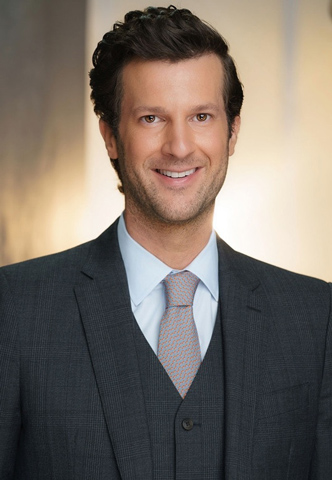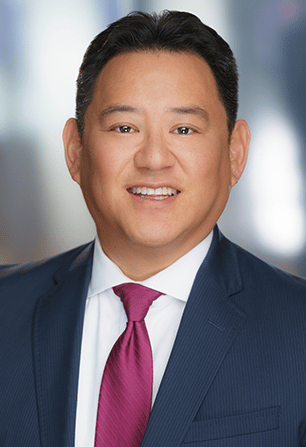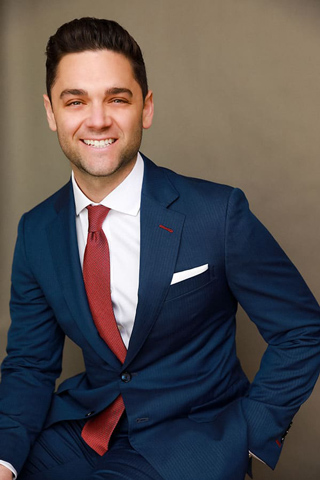Where Do Pedestrian Accidents Most Often Occur in Los Angeles?
Los Angeles, a sprawling metropolis famous for its palm-lined boulevards and cinematic sunsets, is as diverse in its geography as it is in its population.
From the glitzy allure of Hollywood and the historic streets of Boyle Heights to the shores of Malibu and south to Long Beach, each neighborhood offers a distinct flavor shaped by a mix of cultures and histories.
The city’s communities form a vibrant urban mosaic tied together by its famed freeways and a complex network of walkable streets, inviting residents and tourists alike to explore or commute on foot.
While much of the city is pedestrian-friendly, the reality is that it is increasingly deadly for people who walk.
Los Angeles is the second deadliest city for pedestrians, behind New York City, according to a recent study of federal data.
Pedestrian deaths are at their highest rate in four decades and growing worse. About 125 pedestrians lose their lives on the city’s streets each year.
Pedestrian accidents can have devastating consequences. If you’ve been injured, a pedestrian accident lawyer can explain your legal rights and options. Schedule a consultation today to discuss your case.
Why Are LA’s Streets so Deadly for Pedestrians?
Los Angeles’s streets are notoriously dangerous for pedestrians, a grim reality stemming from a lethal mix of densely packed urban spaces and some of the heaviest traffic flows in the U.S.
The city’s sprawling layout and reliance on car transportation result in a high volume of vehicles navigating pedestrian-heavy areas.
Several factors make walking LA’s streets even more dangerous:
- Night: Most pedestrian deaths occur when darkness limits visibility.
- Poor Weather: Inclement weather that reduces visibility, such as rain and fog, often results in drivers not seeing pedestrians until it is too late.
- Driver Distraction: Texting while driving, other mobile phone activity, navigation systems, eating, and tending to children are just some of the distractions that lead to a lack of focus on the road.
- Alcohol: Drunk driving is one of the top causes of pedestrian deaths
- Drugs: Illicit drugs and prescription drugs can also severely impair a driver’s ability to navigate around or yield to pedestrians safely.
- High Vehicle Speeds: Faster driving reduces the reaction time available to avoid striking pedestrians.
- Distractions: Both drivers and pedestrians distracted by smartphones are at greater risk.
Where Do Most Pedestrian Accidents Occur?
Many streets in Los Angeles prioritize vehicles over pedestrian safety by design. Crosswalks spanning wide, multi-lane roads that encourage faster driving are especially dangerous for anyone on foot.
Types of Roads
- Arterial Roads or Stroads: These high-speed roads have multiple lanes that provide access to shopping centers, commercial parks, strip malls and other developments with a lot of foot traffic.
- Rural Highways: These roads are risky for pedestrians due to high speeds and poor infrastructure, often lacking sidewalks, lighting, and safe crossing points.
- Non-residential Commercial Roads: Roads in industrial or commercial areas typically see heavy truck traffic and have few pedestrian crossings, making them hazardous for foot traffic.
Types of Crosswalks
- Unmarked Crosswalks: These crossings do not have any paint or signals to alert drivers to the presence of pedestrians, leading to a higher risk of accidents.
- Mid-block Crosswalks: Crosswalks located between intersections often lack traffic signals, and drivers might not expect pedestrians to cross, increasing the chances of collisions.
- Multiple-threat Crosswalks: Crosswalks on multi-lane roads where the first lane of traffic stops, obscuring the view of a pedestrian from drivers in the next lane.
Types of Intersections
- Unsignalized Intersections: Intersections without traffic lights can be confusing and dangerous for pedestrians, especially when traffic is dense.
- Complex Intersections: Intersections with irregular designs, multiple junctions, or poor signage can confuse both drivers and pedestrians, leading to higher accident rates.
- Roundabouts: While they reduce vehicular collision points, roundabouts can be risky for pedestrians, particularly those unfamiliar with the crossing points and flows.
Other High-Risk Places
- School Zones: Despite lower speed limits, the high volume of vehicles and young pedestrians make these areas particularly precarious during school hours.
- Public Transit Hubs: Areas near bus and train stations are high-risk due to the concentration of pedestrians and vehicles in the same space.
- Parking Lots: In parking areas, many cars move in different directions without clear traffic patterns, increasing the risk for pedestrians.
- Construction Zones: Temporary changes in road layouts and added distractions can endanger pedestrians navigating these areas.
Los Angeles’ Most Unsafe Roads for Pedestrians
Current data shows that nearly half of all pedestrian injuries and fatalities occur in South Los Angeles (aka South Central Los Angeles or South Central). These accidents disproportionately affect people of color, highlighting a significant equity issue. However, pedestrian deaths regularly occur throughout Los Angeles.
Some areas, roadways, and intersections are notoriously unsafe for anyone traveling on foot, including:
Downtown Los Angeles
- The intersection of Figueroa and Olympic:
- High traffic volume from nearby sports and concert venues.
- Alameda Street and Cesar Chavez Avenue:
- A busy junction near Union Station with heavy pedestrian and vehicle traffic.
- Sunset Boulevard and Alvarado Street:
- Known for frequent rush-hour accidents and pedestrian crossings.
Hollywood
- Hollywood Boulevard and Highland Avenue:
- Tourist-heavy areas are especially prone to accidents during events and peak tourist seasons.
- Sunset Boulevard and Vine Street:
- Heavy nightlife traffic contributes to its riskiness.
Westwood
- Wilshire Boulevard and Westwood Boulevard:
- Near UCLA, this intersection sees numerous pedestrians, especially students, which increases accident risk.
Santa Monica
- Lincoln Boulevard and Pico Boulevard:
- High vehicle throughput and a complex intersection create risks for pedestrians.
- Ocean Avenue and Colorado Avenue:
- Entrance to the Santa Monica Pier, heavily trafficked by tourists and locals alike.
Venice
- Venice Boulevard and Lincoln Boulevard:
- A major intersection with complex traffic patterns and frequent foot traffic.
San Fernando Valley

- Van Nuys Boulevard and Sherman Way:
- A hotspot for both pedestrian and vehicular accidents.
- Ventura Boulevard and Laurel Canyon Boulevard:
- Busy commercial area with complex traffic flows and frequent pedestrian activity.
South Los Angeles
- Slauson Avenue and Western Avenue:
- Known for high-speed traffic and risky pedestrian crossings.
- Florence Avenue and Normandie Avenue:
- High accident rates, especially during evening hours.
East Los Angeles
- Whittier Boulevard and Atlantic Boulevard:
- A busy shopping area with dense traffic and significant pedestrian movement.
Los Angeles has taken measures to improve pedestrian safety by adding over 6,000 new crosswalks and installing more signals and signs, but these efforts haven’t been enough to reverse the deadly trend.
Some authorities believe pedestrian deaths continue to climb because of increasing rates of speeding, distracted driving, and drunk driving.
Whenever you walk the streets of Los Angeles, make sure to stay alert to your surroundings.
Never assume drivers will yield to you because you are in a crosswalk or other pedestrian-friendly zone, and be careful exiting your vehicle in downtown’s busy streets.
What Pedestrians Are Most At Risk?
Some people are more vulnerable to being struck and seriously injured or killed while walking along or crossing the streets, some because of their age or condition, others because of their environment, or both.
A number of studies and traffic safety reports show that the pedestrians most at risk are:
Older Adults
Decreased mobility, slower reflexes, and increased fragility are some of the reasons why adults age 65 and older are more at risk. They often require more time to cross streets and may be less able to react quickly to oncoming traffic.
Children, especially those under 15
Their smaller stature makes them less visible to drivers. They are also less likely to judge road conditions safely and are more impulsive. School bus crossings are a significant danger to children; they may assume that vehicles will stop as required by law when the bus signals are active.
Unfortunately, not all drivers comply, and children stepping off the bus might not be visible to passing cars.
Low-Income Individuals
People from lower socioeconomic backgrounds often live in areas with less well-maintained pedestrian infrastructures, such as sidewalks and crosswalks. Additionally, these areas may lack sufficient pedestrian signals, making walking more hazardous.
Racial and Ethnic Minorities
Closely tied to number three, racial and ethnic minorities, including Black and Latinx populations, often face higher risks as pedestrians. This disparity stems from economic inequalities, neighborhood traffic conditions, and lesser pedestrian infrastructure.
Individuals with Disabilities
People with physical challenges face greater risks navigating environments that are not well adapted to their needs, such as lack of curb cuts, non-functioning signals, and poorly maintained sidewalks. They may also be slower to cross busy streets and react to vehicles that fail to yield.
Night-time Workers and Commuters
People walking during low-light conditions (night-time), such as workers or late commuters, are more likely to be struck due to decreased visibility and the higher likelihood of encountering drivers who are fatigued or under the influence.
Injuries Pedestrians Commonly Suffer in Accidents
Every day in the United States, 20 people step outside and die after being struck by a moving vehicle. For every person killed, dozens more are injured, often critically. The wide majority of pedestrian deaths occur in busy urban areas like Los Angeles.
Pedestrian accidents involving collisions with cars, trucks, buses, and other moving vehicles often result in severe injuries and death. The nature and severity of injuries depend on factors such as the vehicle’s speed at impact, the vehicle’s size and weight, and the area of the body struck:
Head Injuries
- Traumatic Brain Injuries (TBIs): TBIs range from concussions to severe brain damage and are a leading cause of death in pedestrian accidents. Most pedestrian TBIs occur when the vehicle strikes the pedestrian’s head, or the individual hits their head on the ground as a result of the collision.
- Skull Fractures: When the impact fractures the skull, it often causes brain injuries and other serious head trauma, including death.
Spinal Cord Injuries
- Partial or Complete Paralysis: Survivors may experience either partial or complete paralysis depending on the area of the spine struck. These life-altering or fatal injuries can result from either direct trauma to the spinal column or secondary issues caused by swelling and damage.
- Vertebral Fractures: Fractured or dislocated vertebrae can harm the spinal cord and lead to neurological impairments or death.
Bone Fractures
- Lower Limb Fractures: Legs and feet are particularly vulnerable in pedestrian accidents. Common fractures include those to the femur, tibia, and fibula, which, while typically not fatal, contribute to long-term mobility issues.
- Upper Limb Fractures: Arms, wrists, and shoulder fractures can occur when a pedestrian tries to break their fall or gets directly hit by a vehicle.
- Pelvic Fractures: These are serious injuries often associated with high-impact collisions and can lead to significant internal damage and are potentially fatal.
Soft Tissue Injuries
- Lacerations and Abrasions: Skin and flesh wounds can be extensive, depending on the nature of the collision, leading to significant blood loss and the potential for fatal outcomes if the accident severs major blood vessels.
- Contusions and Bruising: These injuries are common and can affect any part of the body that a vehicle strikes.
Internal Injuries
- Internal Bleeding: Blunt trauma can injure internal organs. Internal bleeding from organ damage may not immediately manifest and may kill if not immediately treated.
- Organ Damage: The force of a vehicle striking a person can damage internal organs like the liver, spleen, and kidneys.
Psychological Injuries
- Post-Traumatic Stress Disorder (PTSD): The psychological toll of being in a serious accident is deep and lasting. Symptoms may include severe anxiety, flashbacks, and ongoing fear of vehicles.
- Depression and Anxiety: These conditions can develop due to the physical limitations and life changes that severe injuries impose on the victims.
Fatal Injuries / Death
- Instantaneous: Death can occur instantaneously at the scene due to severe head trauma, spinal injuries, or critical organ damage.
- Delayed: Fatal outcomes may also occur days or weeks after an accident due to complications from injuries such as infections, organ failure, or severe brain injury.
Contact Wilshire Law Firm’s Car Accident Lawyers Today
If you or a family member sustained injuries in a pedestrian accident, Wilshire Law Firm has a powerhouse team of personal injury attorneys who can help. We treat every single one of our clients with the utmost compassion and respect, recognizing the unique story behind each case.
Our record of securing maximum compensation is helping thousands of people throughout California rebuild their lives after a serious accident.
Get Justice, Get Paid. Call Wilshire Law Firm now for a free, no-obligation consultation.











